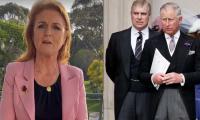receiving orders to proceed to their pre-assigned war stations under overall command of Commodore SM Anwar who was the Commodore Commanding PN Flotilla.
PNS Tughril was the only ship left in harbor as it was undergoing a re-fit programme. It goes to the credit of officers and men of technical services whose dedication ensured such a feat with old and steam driven ships - an accomplishment which will be hard to match today. From the operations branch, if there is one person who deserves a mention, it would be Commodore Saleemi, who as the previous Commodore Commanding Pakistan Navy Flotilla during Rann of Kutch emergency, had worked up the ships to the pinnacle of operational readiness, which is why their response was so swift and speedy.
Pakistan Navy's only submarine PNS/M Ghazi (with Commander KR Niazi in command) had sailed from Karachi three days earlier on 3rd September and on 4th September, she was ordered to shift her patrol to within a radius of 50 miles off Bombay (Mumbai). Pakistan Navy was the first to field a submarine in Indian Ocean in 1965 just as it was the first in the world in 1973 to induct Exocet missiles on its helicopters in its nascent naval aviation, which dramatically altered battlefield disposition. This speaks volumes about vision of naval leadership as prudent deployment of Ghazi radiated strategic effects and kept Indian Navy bottled up in various ports and naval bases for entire duration of the war.
Just as war clouds were gathering in August 1965, intelligence reports suggested presence of Indian Navy heavy cruiser INS Mysore, Frigates Beas and Brahmaputra at Calcutta. Soon they were ordered to proceed to west coast to join other destroyers and frigates and were tracked by PN through HF/DF all the way till Cochin. The aircraft carrier INS Vikrant and another heavy cruiser INS Delhi were refitting at Bombay while carrier borne aircraft had all been shifted to Jamnagar by 5th September.
Around noon on 7th September, all PN ships at sea were alerted about an attack on Dwarka that night, which was about 200 nautical miles from Karachi. They were ordered to assembly point by sunset from where they were to proceed towards Dwarka and on completion of shore bombardment, withdraw to their arc of patrol off Karachi. The force was cautioned about possible presence of some enemy surface combatants and air threat.
There has been some debate as to why Dwarka was chosen for the strike. The intended objectives in the prevalent environments of 1965 were, (a) to draw enemy units out into barrier laid by PNS/M Ghazi, (b) destroy the IAF's only bomber guidance beamer in the area for directing strikes from Jamnagar against Karachi, (c) to cause alarm and confusion along the Indian coast since Dwarka was the centre business in the region, (d) possible diversion of air effort from land operations towards seaward defense of Indian coast and lastly to gain psychological advantage by striking deep into Indian territorial waters. This was a perfectly logical rationale as within 36 hours after the war broke out, Pakistan Navy struck deep into Indian territorial waters, wrested the initiative as well as psychological advantage and put an end to all further air attacks on Karachi by destroying radar and beamer installations at Dwarka.
To achieve this, it was essential to retain an element of surprise. By using a combination of restrictions and relaxations in Electronic Emission Policy on various communication circuits and radars, the force succeeded in keeping its location disguised as it steamed towards target on a south easterly heading at best possible speed. There was no luxury of GPS in those days and war records mentions cirrocumulus clouds scudding across the sky making it impossible to do an evening star shoot. With darkened ships, navigational lights switched off, restrictions on navigational radar, difficulties were experienced in station keeping but ships crews did an excellent job in getting to the firing line in a timely manner.
The Bombardment Orders required units to be in position south south west of Dwarka Light at a distance of six miles and steer northwesterly course. Due to restrictions on communication circuits, Bombardment orders were passed to ships either by heaving line or visual signaling. The ships were to be seven cables apart in what was called formation 'Whisky 81' - one of the sequences worked out by Commodore Saleemi for quickly assuming a formation best suited to PN for surface action instead of relying on Nato's tactical publications in use in the Flotilla. Similarly there was a formation worked out for air defense based on ships weaponry and gun ranges.
The task force finally approached firing position a few minutes past midnight and after sorting out ranging issues one last time, 'Operation Somnath' was executed which authorised each ship to fire fifty rounds of high explosive ammunition. Those who participated in the operation remember the firing as disciplined which on an average, took three minutes to complete. There were some flashes from shore, which were initially assumed as coming from Indian shore battery but later evaluated as own HEDA fall of shots.
The Indian Navy official version acknowledged the damage caused as a result of this action. The report stated that around midnight on 8th September some shells fell directly on Naval Radar Facility destroying most of the infrastructure. About fifty persons were officially reported dead with many more injured. The Naval Air Station at Dwarka used for test flights for INS Vikrant also received shells on the runway and was rendered ineffective for the next two months.
After the war, questions were asked in Indian parliament as to why Indian Navy didn't respond to this daring attack by Pakistan Navy, especially after President Ayub's speech left no doubt that Pakistan was at war with India. The Indian Defense ministry maintained that defense of Andaman and Nicobar Islands against an attack from Indonesia was more important than engaging Pakistan Navy.
This was strange logic because if it was so then why were the Indian Navy units shifted to west coast towards end of August. The then Indian Navy Chief gave even more queer logic by stating that Indian Navy was barred from operating north of Porbandar. If there is ever a classic example of gridlock in thinking and paralysis in high command, this is it.
Many officers and sailors who participated in the 1965 war are no more with us and have since passed away leaving behind memories of Pakistan Navy's finest hour and an example for younger generation to follow in their footsteps. As we celebrate 50th anniversary of defending our motherland a small prayers for our departed companions is in order. May Almighty Allah bless their souls and may the earth rest lightly on their mortal remains. Amen.
A Chinese flag can be seen in this image. — AFP/FileIslamabad: Sabheen Ghoury, Parliamentary Secretary for...
Islamabad College for Boys , G-6/3 students seen in this undated image.—...
PM’s Coordinator for Climate Change & Environmental Coordination Ms Romina Khurshid Alam speaking at an event. —...
Founding Vice Chancellor of National Skills University Islamabad Prof. Dr Muhammad Mukhtar seen amid an event.—...
The representational image shows flags of Pakistan and the United States. — APP/FileIslamabad: The United States has...
A representational image of a kidnapped person with tied hands. — APP/fileIslamabad: In a remarkable operation, the...







